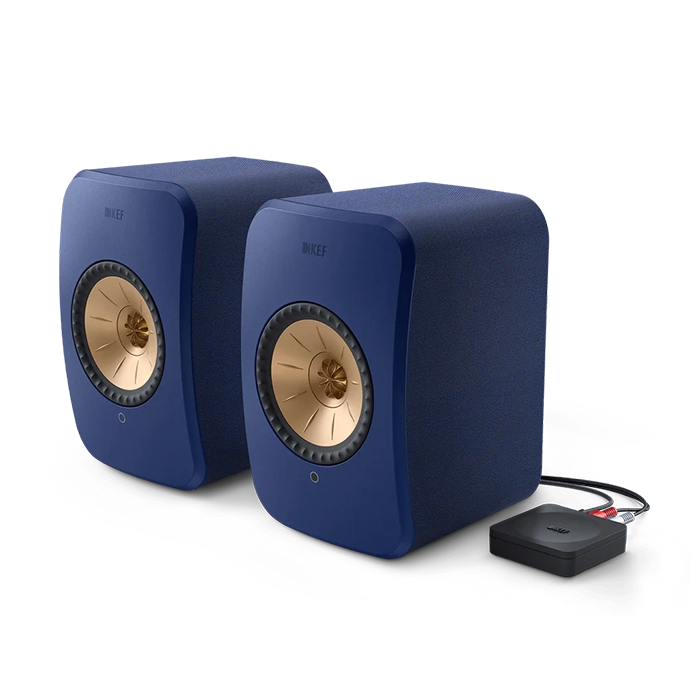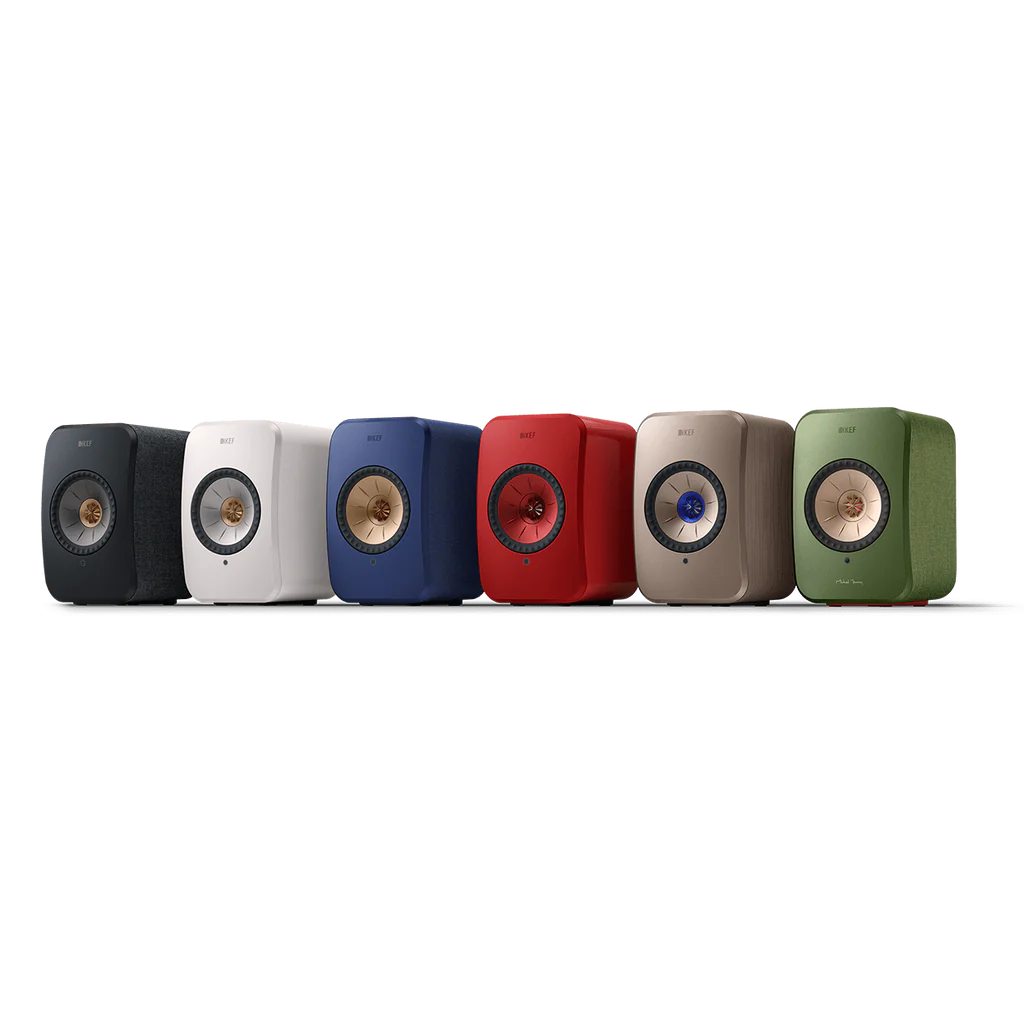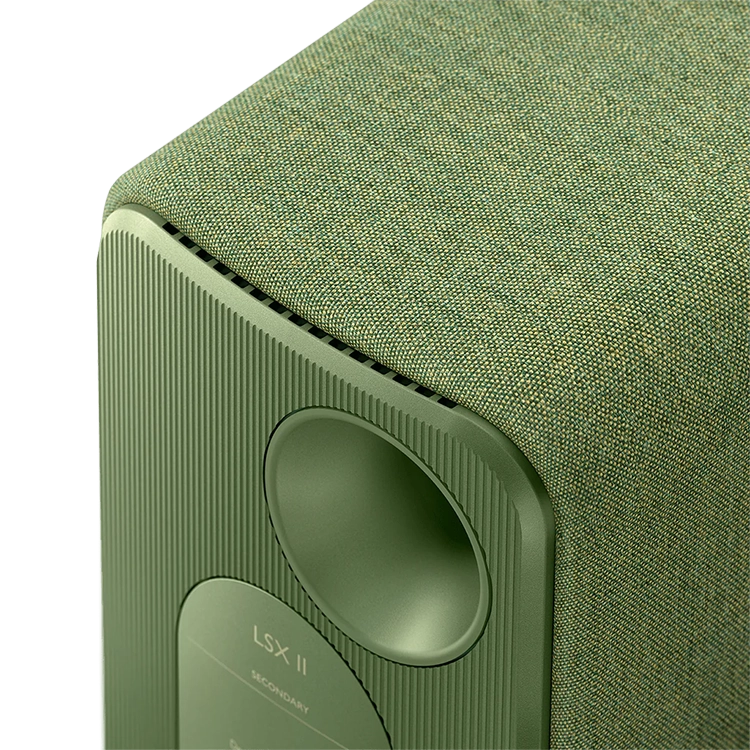Pros
- Natural, rich, extremely detailed, and dynamic sound reproduction.
- Incredibly coherent and immersive soundstage.
- Stunning size/power ratio.
- Versatile use with rich connectivity.
- Simple to set up and user-friendly.
- Exceptionally well-crafted.
Cons
- Excessively high Bluetooth latency.
- Bass extension that may seem somewhat limited.
- High-frequency treatment slightly less transparent than on the LSX.
As an Amazon Associate, I earn from qualifying purchases.
The excellent compact active KEF LSX speakers make a grand return in a second version, carrying significant improvements. This model now offers true versatility without compromising its outstanding qualities.
Presentation
Similar to the larger LS50 Wireless, KEF’s small active LSX speakers are advancing with many new features. The recently launched LSX II on June 23, 2022, follow in the footsteps of their larger counterparts, maintaining the same design and emblematic acoustic architecture while expanding connectivity options and improving user-friendliness.
The manufacturer has also decided to enhance the sound performance of these small speakers by improving the onboard electronics, particularly the signal processing with a new DSP named Music Integrity Engine. These advancements, unfortunately, come at a high price. At their launch, the LSX II saw a significant price increase from €1,200 to €1,500 compared to the first version. They remain, however, significantly more affordable than the LS50 Wireless II, priced under €2,800. We tested the LSX II version 1.1, with the KEF Connect application in version 1.13.1.
Construction
Apart from a few minor aesthetic differences, the LSX II are essentially a carbon copy of the previous model, which is a positive aspect. The speakers continue to boast top-notch build quality and finish. The iconic Uni-Q coaxial driver from KEF, a distinctive visual and acoustic feature of the speakers, remains proudly on display without a front grille.
Practically speaking, the LSX II retain a significant advantage in compactness compared to some competitors (155 x 240 x 180 mm per speaker), despite their active design, connected features, and multiple connectivity options. They will easily fit on a desk or on either side of a television, if the TV stand permits.
Connectivity
The LSX II, however, have greatly evolved in terms of connectivity compared to the first generation, making a significant leap forward in versatility. KEF has taken on board feedback about the larger LS50 Wireless II, which lacked a USB interface for direct computer connection. No such oversight with the LSX II: a USB-C port is now available for direct connection to a computer, both on Windows and Mac OS (192 kHz / 24-bit max).
Another welcome new feature in the latest generation of KEF active speakers is the HDMI ARC port. The LSX II can now be connected more easily to a television, also benefiting from synchronisation of power off/on and volume via HDMI CEC, with the optical input still available. There is also an auxiliary mini-jack stereo input, a preamplified subwoofer output, and a Bluetooth receiver. However, there is no RCA phono input.
It should be noted that network connectivity can also be completely wireless via Wi-Fi instead of RJ45, a feature appreciated by those averse to cables.
User Experience
Despite their sophistication and versatility, the LSX II remain accessible and simple to use. Once each speaker is connected to the mains, setup is straightforward. Connection to the local network is done through the KEF Connect application following a brief tutorial (and via AirPlay for iOS devices).
In the absence of integrated control buttons on the speakers, operation is conducted through the application, especially for anything related to connected features, or more simply via the provided remote control (volume management, playback, source selection, track navigation, mute, sleep/wake); nothing too complicated.
The great versatility of the LSX II also lies in the practical and ingenious ideas they embody: the ability to wirelessly connect the speakers to each other without loss, and the option to place the master speaker on either the left or right. A simple option to select in the KEF app, and it’s done. The app is particularly user-friendly, providing a nice list of customization options, some of which are highly desirable in all systems of this kind: detailed equalisation, wake-up/source assignment on system wake-up, volume control sensitivity/maximum level, streaming quality, and more.
If you opt to use the speakers via Bluetooth for audio-visual content, be wary of the latency. The second-generation LSX still causes an extremely high delay in this mode (actually higher than the first LSX), with a delay of just over 700 ms between sound and image. Some smartphone apps or video streaming services generally apply delay compensation when detecting a Bluetooth output device, but it remains insufficient in this case; it’s best suited for music listening. Fortunately, there are plenty of alternative connection solutions.
Connected Features
As mentioned, the LSX II have been upgraded like the LS50 Wireless II in terms of the application and connected features. KEF’s compact active speakers offer broader possibilities in this area, with compatibility for AirPlay 2, Chromecast, Spotify Connect, Tidal Connect, and DLNA/uPnP. The speakers can receive streamed content from compatible devices on the network and be integrated into a multi-room system.
The list of compatible music services does not quite match some connected audio ecosystems (like Sonos), but it remains quite extensive (Amazon Music, Deezer, Qobuz, Tidal, Spotify via Spotify Connect, Apple Music via AirPlay 2, etc.) KEF also provides access to its own music playlist. The LSX II make few compromises on decoded formats, even supporting DSD, MQA, and PCM up to 384 kHz / 24-bit.
Audio
The LSX II inherit the foundation of the first generation (Uni-Q coaxial driver, Class D amplification of 70 + 30 W per speaker), this time with a new signal processing section called the Music Integrity Engine; a subtle change that enhances an already excellent formula.
With one minor exception, the second-generation LSX indeed inherit all the sonic characteristics of their predecessors: a savvy mix of “monitoring” and “hi-fi” listening for a consistently pleasurable experience. This aspect is once again linked to the default frequency response of the speakers, with a subtle emphasis on bass/low-mids, giving the overall sound a round, warm, and soft sonority. This colouration is light and perfectly controlled, ensuring a natural, coherent reproduction with preserved timbres.
Moreover, as with all KEF’s wireless LS speakers, the frequency balance is adjustable via the app, to optimise the output according to the acoustic specifics of the listening room, speaker positioning, and personal preferences. In our case, we opted for a “desk” setting at -1.5 dB to optimise the balance of bass/low-mids.
This sonic mastery is also evident in the very high level of detail, definition, and dynamism that these speakers are capable of, comparable to high-quality home-studio speakers, often much larger. The LSX II impress with their rich, defined, and impactful sound reproduction, regardless of the content. Admittedly, the speakers have their limits when reproducing the lowest frequencies, and the most meticulous may notice slight overflows in the most demanding moments with rapid and closely spaced kick drum/bass notes, but the clarity is never compromised, and these small speakers demonstrate great poise in the bass given their size. Those desiring very deep bass might consider adding a good subwoofer to this pair, though the right acoustic environment is necessary to accommodate and enjoy it properly.
The quality of the soundstage reproduction is also a great strength of the LSX II, maintaining incredible coherence and precision for remarkable immersion. The stereo image is perfectly detailed and layered, with a stable phantom centre, providing a very pleasant sensation of presence, beautifully enhancing voices or any highlighted instrument, as well as true depth. Each element, even the most discreet, finds its rightful place and is identifiable instinctively. There’s nothing to add here compared to the first-generation LSX, and frankly, nothing to improve. The same applies to power reserve and distortion management, which commands respect. Even at intense sound levels, and on tracks that could challenge them, the LSX II remain unflappable, delivering a clean, legible output.
After all this series of qualities and praise, only a very slight difference remains to be noted in these LSX II, briefly mentioned at the start. It’s a very subtle detail, almost anecdotal, but detectable by trained ears – especially in a comparative listening situation with the first-generation model, say, in a store. The LSX II handle the highest frequencies a little differently. A part of the extreme highs – and therefore the highest harmonics – is subtly highlighted, giving them a slightly less silky aspect; certain elements (voice sibilants, cymbals like the hi-hat or the bell of the ride) can occasionally take on a very slightly hissing or metallic sonority.
Conclusion
It’s hard to find a size/performance/versatility ratio as solid as that of these LSX II, which elevate the user experience to an even closer to impeccable level. This extremely successful compact version of the prodigious LS50 Wireless II has little to envy them and is perfectly capable of delivering excellent listening pleasure. This is the ideal solution for those who want (and can afford) the best possible pair of compact active stereo speakers.
As an Amazon Associate, I earn from qualifying purchases.




